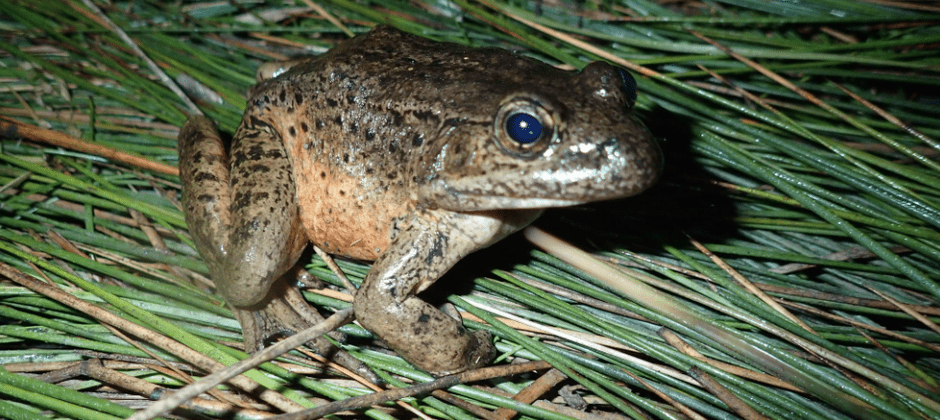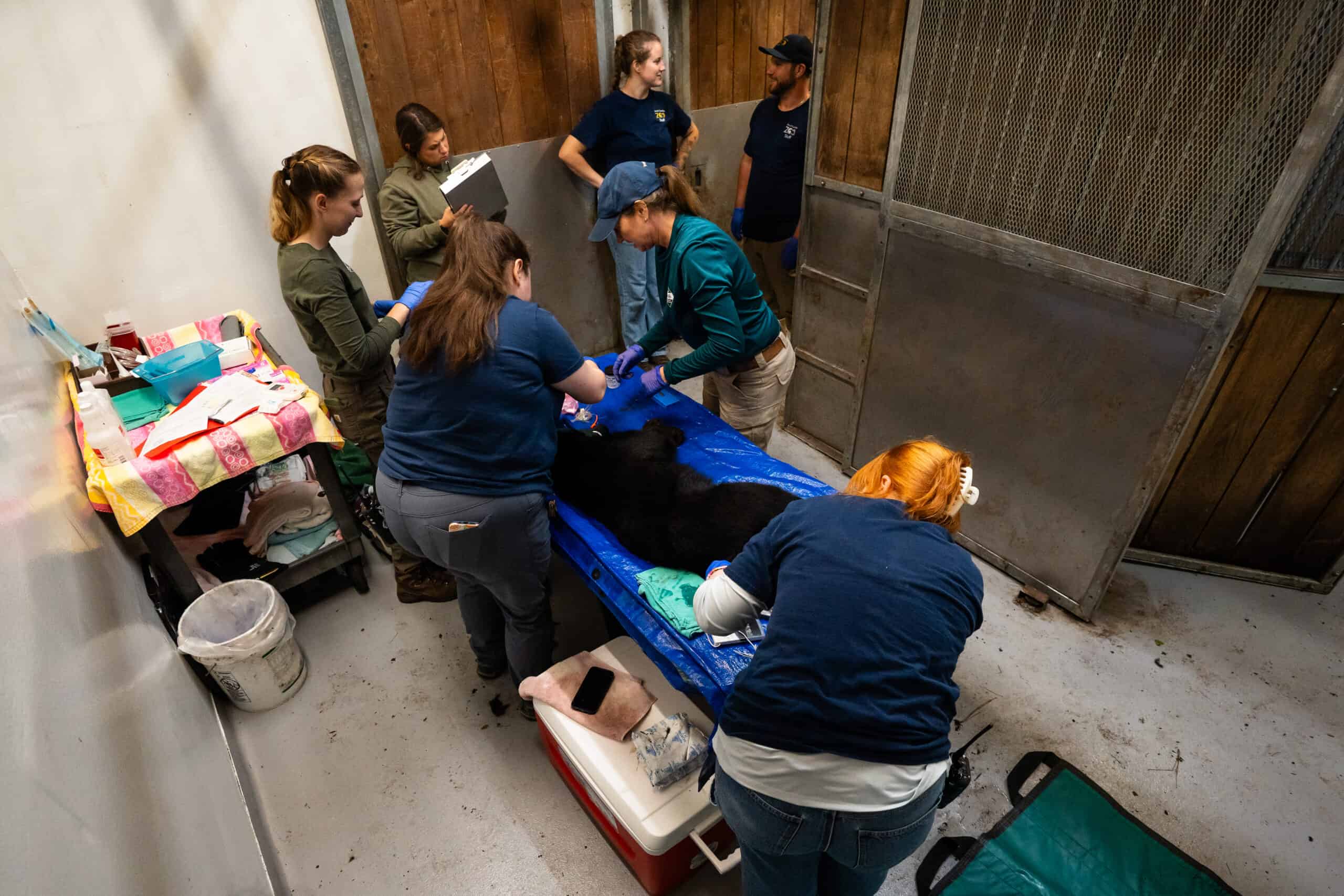Share this article
Baja California frogs suffer from chytrid fungus
Although Baja California, Mexico and Southern California are very close to one another, the same species of frogs in Mexico are having a harder time with a fungal disease that can devastate amphibian populations.
Chytridiomycosis, often shortened to chytrid, is caused by the fungal pathogen Batrachochytrium dendrobatidis (Bd), which can thicken frogs’ skin, stopping them from exchanging salts and minerals through their bodies. These symptoms can be fatal.
Andrea Adams, a researcher at U.C. Santa Barbara, had been studying California red-legged frog (Rana draytonii) populations in the south of the state. The species is listed federally as threatened due to habitat loss, but she also wondered if chytrid played a role in their decline. She found 15% of all of the species she and her colleagues studied had chytrid, while 30% of the red-legged frogs in Southern California tested positive for the fungal disease.
When Adams learned of an opportunity to collaborate with researchers nearby in Baja California, she jumped on it to learn if the same thing was happening there. “Baja California is really cool—it’s similar to Southern California ecologically,” she said, but, “there seems to be something different going on with chytrid fungus there.”
She teamed up with Anny Peralta-Garcia, director of Conservación de Fauna del Noroeste (Conservation of Northwest Fauna), a nonprofit research and conservation organization in Baja California, and Carlos Flores from the local university Universidad Autónoma de Baja California, to use an international grant to study how frogs in different elevations in Baja California were impacted by chytrid. They published a study led by Adams on their findings in Global Ecology and Conservation.
The Mexican biologists conducted the field work, collecting samples from November 2015 to October 2016 from frogs occurring at three different elevations. The lowest site was a perennial stream with hot springs, the second highest was 2,000 feet up in the Sierra San Pedro Mártir, and the highest was 6,700 feet elevation in Sierra de San Pedro Mártir National Park, which had lots of livestock but few people.
The Mexican team, which included students from the local university, caught the frogs at night and swabbed them to later check for the fungus. They would go to the area during the day and night, walking around streams to find frogs. At night, they used spotlights that reflected off of the frogs’ eyes and led the researchers to them. Then, they rereleased the frogs. “It’s just some really beautiful habitat,” Peralta-Garcia said. “At the higher elevations, it was so cold; it was interesting to see what the frogs were doing. In the winter, they would just lay there not doing much because it was too cold for them.”
After reviewing the data, the team found that chytrid infections were more prevalent in the higher elevation, and frogs had higher pathogen loads there. It could be because those areas are cooler and moister, fostering the right conditions for the fungus to thrive.
Overall, 68% of the amphibians they surveyed had the fungus, compared to 15% in Southern California. What’s more, 99% of California red-legged frogs in the highest elevation in Baja California had the fungus.
Adams said this could have something to do with the timing that the fungus showed up there. “Higher prevalence and loads could mean it’s in an earlier phase of the epizootic, with later arrival of the fungus, or it could mean Baja California has a different form of the pathogen that causes more severe disease,” Adams said.
Historical museum specimens suggest chytrid arrived in Southern California as early as 1915 and Baja California in 1926. Adams and Peralta-Garcia sampled Baja California museum specimens for chytrid and detected the pathogen as early as 1932. Adams said that while museum specimens are helpful, they aren’t the silver bullet answer to questions about the timing of epizootics. “Researchers are limited to what was collected and when,” she said. “You have to be very cautious when trying to extrapolate from museum specimens.”
And when Peralta-Garcia returned to the high elevation site more recently, she saw a decline in the frog population. “I wonder if it was the epizootic event that happened,” she said. But more data needs to be collected to understand if the decline is natural or if threats like Bd caused the decline.
Adams said the findings show how a pathogen can act differently in different places. That underlines the need for people working with animals to be careful about spreading diseases, she said, as pathogens can mutate rapidly and lead to variation in infections. “People should be really careful going place-to-place, making sure equipment is decontaminated between sites,” she said. “There is a lot of room for improvement when it comes to aquatic biosecurity. It all comes down to human behavior.” Peralta-Garcia added that this research helps prioritize areas for conservation. TheBd fungus needs to be monitored at the highest elevation site, she said, and it is a potential threat to this unique population.
Adams also stressed the importance of international collaborative projects. While a lot of research has been done on chytrid in the states, she said it’s important to have more research outside U.S. borders. “Geopolitical boundaries can affect wildlife management, but they don’t have to affect our research approaches. Working on conservation problems together allows us to exchange and learn so much from each other.”
Peralta-Garcia agrees. “Collaboration is key,” she said, adding that researchers in Mexico can use some of the same restoration of habitats and other techniques to help the frogs. “Through collaboration, we don’t have to start from zero.”
Header Image:
Threatened California red-legged frogs are highly susceptible to chytridiomycosis.
Credit: Conservación de Fauna del Noroeste








